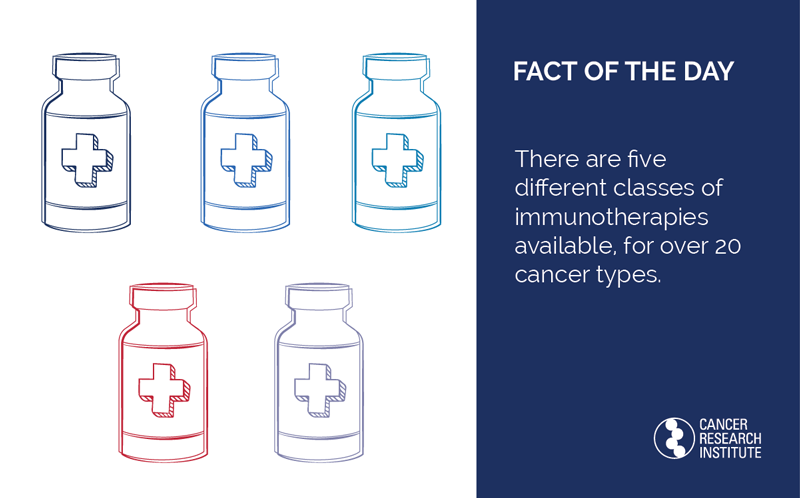 There are currently five different classes of immunotherapies available for patients, for over 20 cancer types.
There are currently five different classes of immunotherapies available for patients, for over 20 cancer types.
As of June 2017, the U.S. Food and Drug Administration (FDA) has approved 32 different immunotherapies for patients with cancers including but not limited to: melanoma, lung cancer, bladder cancer, kidney cancer, lymphoma, leukemia, and prostate cancer. These immunotherapies enhance the cancer-fighting activity of the immune system in a variety of ways, which can be roughly divided into the five following classes:
Cell-based immunotherapies physically supplement patients’ immune systems with immune cells. These include bone marrow transplants and newer more sophisticated cell transplants, such as CAR T cells.
Immunomodulators can act directly on immune cells to promote anti-cancer activity. The first immunomodulator (the cytokine IFN-α) was approved by the FDA in 1986 for leukemia (after CRI provided the seed funding for the first significant trial in humans), while the first checkpoint inhibitor (the anti-CTLA-4 ipilimumab) was approved in 2011 for advanced melanoma.
Vaccines help educate or arouse the immune system against a potential threat. In 1990, a tuberculosis vaccine called BCG (bacillus Calmette-Guerin), became the first to be FDA-approved in the United States, for the treatment of bladder cancer. The vaccine Sipuleucel-T was approved for prostate cancer patients in 2010.
Antibody-based targeted therapies can target cancer cells directly, or other cells/proteins that help support tumor survival. The first antibody (the anti-CD20 rituximab) was approved in 1997 for lymphoma. There are now over a dozen antibody-based immunotherapies approved for various cancers, including modified versions with anti-cancer drugs attached.
Oncolytic viruses can be modified to infect cancer cells and cause them to burst (think of dynamite!), which attracts the attention of the immune system. The oncolytic virus T-Vec was approved for patients with advanced melanoma in 2015.
CRI scientists made major discoveries and crucial contributions that enabled the development of (or improved) nearly all of these immunotherapies, which we will discuss in more depth throughout the rest of this campaign.
Learn more about immunotherapy treatment types.
Image credit: Cancer Research Institute